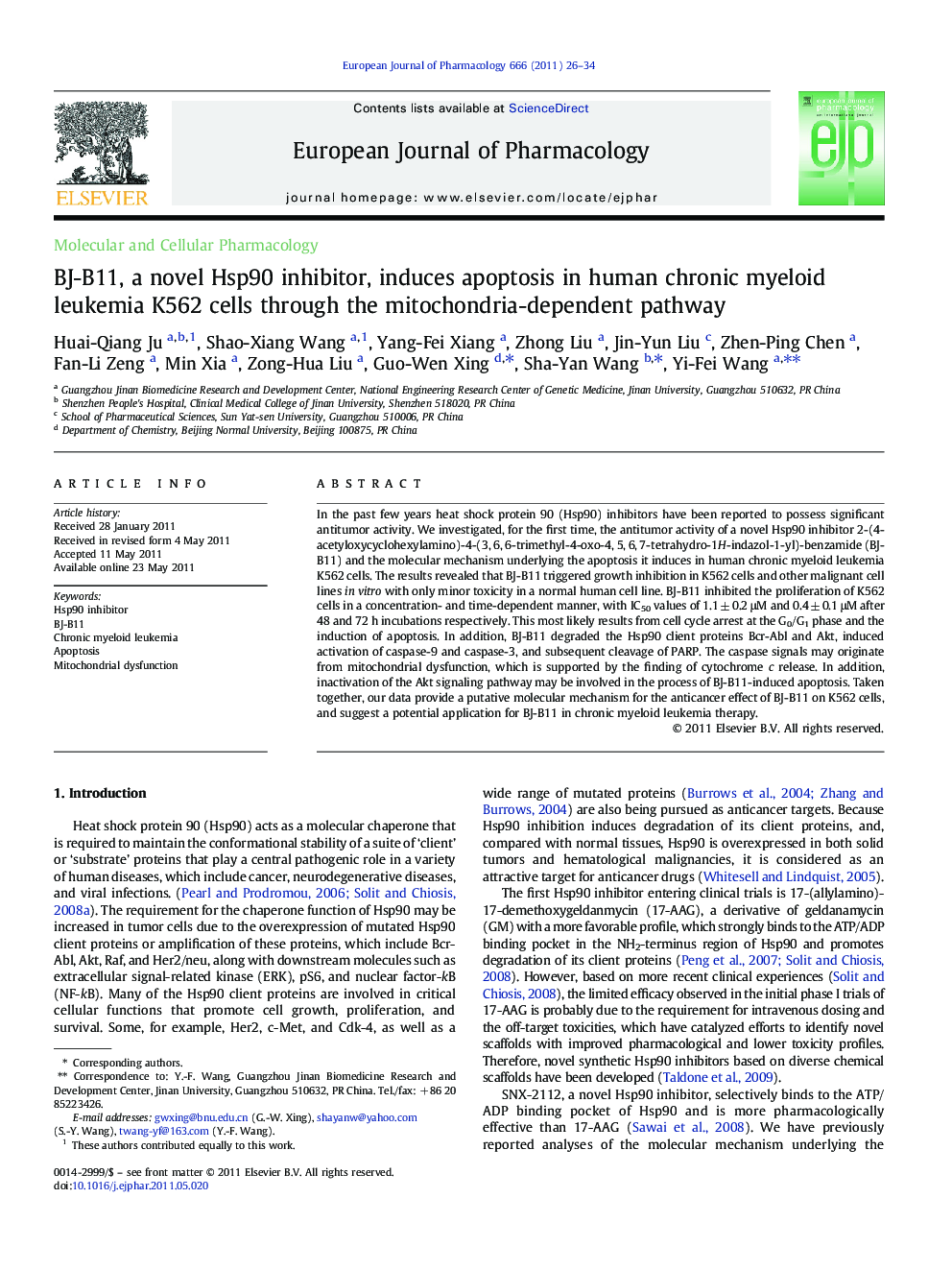| Article ID | Journal | Published Year | Pages | File Type |
|---|---|---|---|---|
| 2532621 | European Journal of Pharmacology | 2011 | 9 Pages |
In the past few years heat shock protein 90 (Hsp90) inhibitors have been reported to possess significant antitumor activity. We investigated, for the first time, the antitumor activity of a novel Hsp90 inhibitor 2-(4-acetyloxycyclohexylamino)-4-(3, 6, 6-trimethyl-4-oxo-4, 5, 6, 7-tetrahydro-1H-indazol-1-yl)-benzamide (BJ-B11) and the molecular mechanism underlying the apoptosis it induces in human chronic myeloid leukemia K562 cells. The results revealed that BJ-B11 triggered growth inhibition in K562 cells and other malignant cell lines in vitro with only minor toxicity in a normal human cell line. BJ-B11 inhibited the proliferation of K562 cells in a concentration- and time-dependent manner, with IC50 values of 1.1 ± 0.2 μM and 0.4 ± 0.1 μM after 48 and 72 h incubations respectively. This most likely results from cell cycle arrest at the G0/G1 phase and the induction of apoptosis. In addition, BJ-B11 degraded the Hsp90 client proteins Bcr-Abl and Akt, induced activation of caspase-9 and caspase-3, and subsequent cleavage of PARP. The caspase signals may originate from mitochondrial dysfunction, which is supported by the finding of cytochrome c release. In addition, inactivation of the Akt signaling pathway may be involved in the process of BJ-B11-induced apoptosis. Taken together, our data provide a putative molecular mechanism for the anticancer effect of BJ-B11 on K562 cells, and suggest a potential application for BJ-B11 in chronic myeloid leukemia therapy.
Graphical abstractFigure optionsDownload full-size imageDownload high-quality image (79 K)Download as PowerPoint slide
